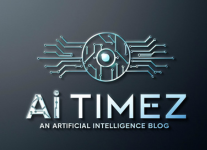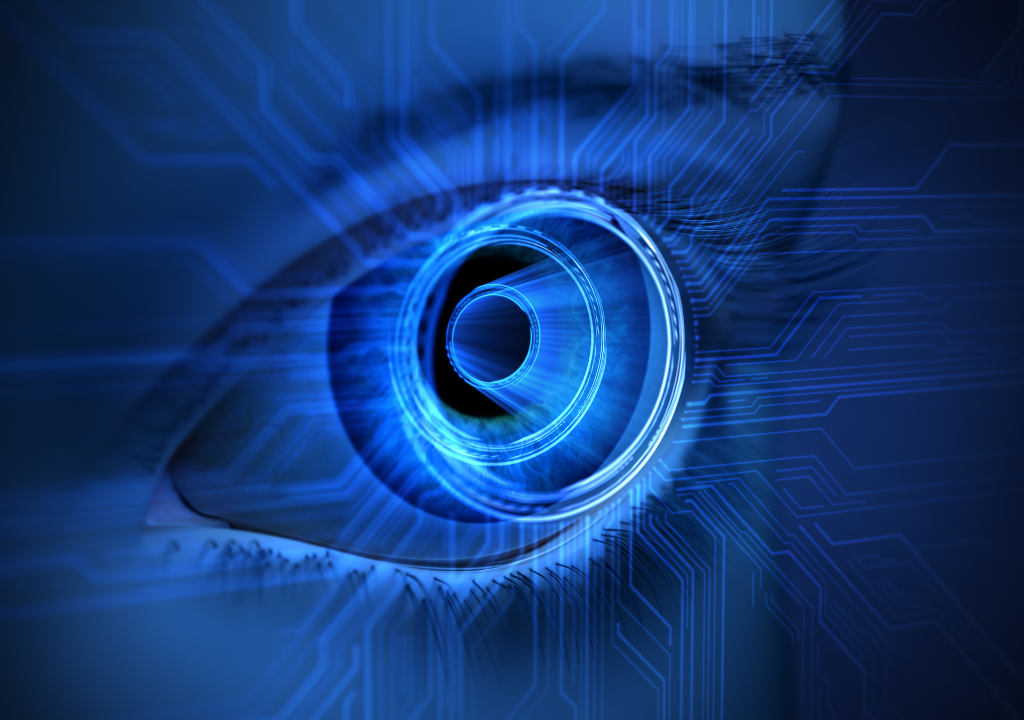Introduction
In today’s interconnected world, digital threats loom larger than ever. The rapid advancements in technology have brought both innovation and vulnerability. Artificial Intelligence (AI) has emerged as a game-changer in this arena, promising new levels of efficiency and protection in the cybersecurity landscape. But with great power comes great responsibility—and challenges. The union of AI and cybersecurity is both an opportunity and a necessity to protect our digital future.
1. Understanding the Role of AI in Cybersecurity
How AI Is Revolutionizing Cybersecurity
AI’s ability to process vast amounts of data and identify patterns makes it an essential tool in cybersecurity. Traditional systems often struggle to keep up with the volume and complexity of modern threats. However, AI can analyze data at lightning speed, identifying anomalies that indicate potential breaches or attacks.
For instance, AI-powered threat detection systems can spot unusual login patterns or unauthorized data access, flagging them before they escalate. Predictive analytics, driven by machine learning, allows organizations to anticipate and mitigate risks even before an attack occurs. This proactive approach represents a seismic shift from traditional, reactive cybersecurity measures.
Benefits of AI in Cybersecurity
AI enhances cybersecurity through speed, efficiency, and automation. By automating repetitive tasks, such as monitoring logs or scanning for vulnerabilities, AI frees up human analysts to focus on strategic problem-solving. It also offers enhanced protection by quickly detecting and responding to threats in real time, minimizing potential damage.
Moreover, AI-driven systems can provide robust data protection through encryption algorithms and intrusion detection mechanisms. The result? A faster, more reliable, and scalable defense framework that adapts to the evolving threat landscape.
2. Major Cybersecurity Threats in the Digital Era
Advanced Persistent Threats (APTs)
Advanced Persistent Threats represent a significant challenge in cybersecurity. These are prolonged, targeted attacks designed to infiltrate networks and remain undetected for extended periods. Hackers behind APTs often use sophisticated techniques, making them hard to detect with traditional methods.
AI steps in by analyzing user behavior and network activity to identify deviations indicative of APTs. Real-world examples include the SolarWinds breach, where attackers exploited vulnerabilities in a widely used platform to access sensitive information. AI’s ability to learn and adapt makes it indispensable in countering such threats.
Ransomware and Malware
Ransomware attacks have surged, targeting businesses and individuals alike. Hackers encrypt critical data and demand payment for its release, often causing significant financial and reputational damage. AI combats ransomware by identifying unusual file behavior, such as sudden encryption or unauthorized access.
Additionally, machine learning algorithms can detect and neutralize malware by analyzing patterns in code or network traffic. This real-time detection capability helps prevent widespread infection and reduces downtime.
Social Engineering Attacks
Social engineering exploits human psychology to breach security defenses. From phishing emails to impersonation attempts, these attacks rely on deceiving individuals rather than exploiting technical vulnerabilities.
AI-driven tools can analyze email content, flagging suspicious links or attachments. Advanced Natural Language Processing (NLP) models help identify phishing attempts by detecting subtle cues in language or formatting. By empowering users with AI-based protection, organizations can significantly reduce the risk of falling victim to social engineering tactics.
3. How AI Enhances Cyber Defense
AI-Powered Threat Detection Systems
Threat detection is at the heart of modern cybersecurity, and AI excels in this domain. By leveraging machine learning models, AI systems can identify patterns in vast datasets that may indicate a breach. For example, AI can detect unusual login attempts from unknown devices or geographic locations, raising red flags for potential intrusions.
Early warning systems powered by AI allow organizations to respond promptly, minimizing damage and preventing data loss. These systems are constantly learning, making them more effective over time.
Role of AI in Predictive Cybersecurity
Predictive cybersecurity leverages AI to foresee and counter potential threats before they occur. By analyzing historical data and current trends, AI can identify vulnerabilities that attackers might exploit. This proactive approach not only reduces risk but also builds resilience against future challenges.
Big data plays a crucial role in this context. With the ability to process and analyze massive datasets, AI uncovers insights that would be impossible to discern manually, helping organizations stay one step ahead of cybercriminals.
Read About: ” Ethical AI: Navigating the 6 Key Challenges “
4. The Challenges of AI in Cybersecurity
AI-Powered Cyber Threats
While AI is a powerful ally, it can also be a dangerous weapon in the wrong hands. Cybercriminals are increasingly using AI to launch sophisticated attacks. For example, AI-driven malware can adapt to evade detection by traditional security tools. Similarly, AI-powered phishing scams can craft highly personalized and convincing messages, increasing their chances of success.
Automated attacks, such as Distributed Denial of Service (DDoS) assaults, have also become more efficient with AI. These attacks overwhelm systems with traffic, causing service outages. The challenge lies in creating defenses that can keep up with AI’s evolving capabilities in the hands of adversaries.
Ethical Concerns and Bias in AI
AI is not infallible—it operates based on the data it’s trained on. If this data contains biases, the AI’s decisions may inadvertently favor or disadvantage certain groups. In cybersecurity, such biases can lead to ineffective threat detection or even unintentional discrimination.
Privacy is another concern. AI systems require access to large amounts of data to function effectively, but this raises questions about user consent and data security. Striking a balance between utility and ethics is essential to building trust in AI-powered cybersecurity systems.
Dependence on AI Technology
Over-reliance on AI can introduce new risks. If organizations place too much trust in AI without proper oversight, they may overlook critical vulnerabilities. Moreover, cyberattacks targeting AI systems themselves—such as poisoning the data used to train machine learning models—could have devastating consequences.
Human oversight remains vital to ensure that AI systems operate as intended and adapt to unexpected challenges. A balanced approach, combining AI with human expertise, is key to mitigating these risks.
5. Future Trends in AI and Cybersecurity
Integration of Quantum Computing
Quantum computing is poised to revolutionize cybersecurity by providing unprecedented computational power. Quantum cryptography, for example, offers secure communication channels that are virtually unbreakable by current standards. This technology complements AI’s capabilities, creating a formidable defense against even the most advanced threats.
However, quantum computing also presents challenges. It could potentially break existing encryption methods, rendering traditional security measures obsolete. Combining quantum computing with AI-driven solutions will be essential to navigating this new landscape.
AI and Blockchain in Cybersecurity
Blockchain technology, known for its decentralized and tamper-proof nature, pairs well with AI to enhance cybersecurity. For instance, blockchain can secure AI-generated logs, ensuring they remain unaltered and trustworthy. This integration creates transparency and accountability in AI-driven systems.
Use cases include securing Internet of Things (IoT) devices and creating immutable records for threat analysis. As adoption grows, the synergy between AI and blockchain will redefine the standards for digital security.
6. Strategies for Strengthening AI-Driven Cybersecurity
Building Robust AI Models
Developing effective AI models requires continuous training and optimization. These models must be adaptable, learning from new threats to stay relevant in an ever-changing environment. This involves using diverse datasets to minimize biases and improve accuracy.
Moreover, regular testing is crucial to identify and address weaknesses in AI systems. By simulating cyberattacks, organizations can evaluate the robustness of their defenses and refine their strategies accordingly.
Collaboration Between Humans and AI
AI is a tool, not a replacement for human expertise. The most effective cybersecurity strategies leverage the strengths of both. Humans provide contextual understanding and ethical oversight, while AI excels at processing data and identifying patterns.
Interdisciplinary teams, combining cybersecurity experts with data scientists and AI engineers, are essential for creating well-rounded solutions. By fostering collaboration, organizations can maximize the potential of AI while mitigating its limitations.
Read About: ” 6 Ethical Considerations of Artificial Intelligence “
Conclusion
The integration of AI into cybersecurity marks a pivotal moment in the fight against digital threats. From advanced threat detection to predictive analytics, AI offers unparalleled capabilities to safeguard sensitive information. However, its potential misuse and inherent challenges require careful consideration.
Balancing innovation with ethical practices and human oversight is key to harnessing AI’s full potential. As technology evolves, the partnership between AI and cybersecurity will play a critical role in protecting our digital future.
FAQs
1. What are the key benefits of using AI in cybersecurity?
AI and Cybersecurity – AI offers real-time threat detection, automates repetitive tasks, and enhances data protection, making cybersecurity more efficient and effective.
2. How does AI detect and prevent cyber threats?
AI and Cybersecurity – AI uses machine learning to identify anomalies, analyze patterns, and predict potential attacks before they occur.
3. What are some challenges associated with AI in cybersecurity?
AI and Cybersecurity – Challenges include ethical concerns, biases in AI algorithms, and the potential misuse of AI by cybercriminals.
4. Can AI completely replace human involvement in cybersecurity?
AI and Cybersecurity – No, human oversight is essential for contextual understanding, ethical decision-making, and addressing AI’s limitations.
5. What are future innovations in AI-based cybersecurity solutions?
AI and Cybersecurity – Emerging trends include quantum computing integration, AI-blockchain collaboration, and more adaptive, ethical AI models.


